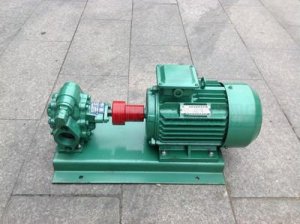Technical analysis to maintain high yield of screw pump and gear pump
The world's common mechanical oil recovery method is screw pump and gear pump pumping, and its common work topic is that the pump can't be full, resulting in low yield. It is not full because the pump capacity is greater than the well's output or the pumping inlet gas. If the separation is not good, the displacement of the pump in one department will be lost due to the interference of the gas. If the interference of the internal gas of the pump is eliminated and the running time of the pump is controlled, the pump displacement can be matched with the amount of liquid flowing into the bottom of the well, which can improve the efficiency and reduce the cost. The detailed practice of maintaining high yields of screw pumping oil is as follows:
1. Acoustic level measurement should be carried out to determine the relative depth of the production surface and the pump suction inlet. If the liquid level is higher than the pumping inlet, the well cannot be mined in large quantities. If the gas interference affects the yield, the liquid level is higher than the pumping inlet; if the pumping volume is too large, resulting in low production, the liquid level should be at or around the pumping inlet.
2. The indicator meter measures the percentage of the pump full coefficient, and the integrated data acquisition system can simultaneously obtain the motor power and the indicator data. One of the main uses of the dynamometer is to diagnose how the pump is operating and to analyze downhole problems. The application of the liquid level measurement combined with the indicator map can be used to find out whether the well is produced at a large output, whether the height of the liquid column is higher than the depth of the pump inlet, whether the pump is not full, and whether the free gas moves upward along the casing annulus.
3. Diagnose low energy efficiency wells. The method of diagnosis is to determine the total efficiency of the pumping system, and to determine the total efficiency, only the power input to the original idea, the bottom hole production pressure and the accurate production test data are measured. Generally, the total efficiency of the beam pumping system should be about 50%. If it is lower than this, its function should be improved. Techniques for improving overall efficiency include maintaining high volumetric efficiency (pump specification matching wellbore injection, eliminating gas interference, pumping with an evacuation controller or timer) and replacing excessive motorized ideas.

4. Separation of underground gas. Invalid gear pump operation is often caused by gas interference, which can be diagnosed by acoustic level measurement and dynamometer. The pumping inlet is placed below the fluid inlet section, and if placed above, a gas separator should be used. If the valve seat nipple is placed at least 10 ft below the bottom of the fluid entry section, effective gas separation may occur in the annulus, at which point the casing acts as a separator outer cylinder. However, the premise of the well often does not allow the pump to be placed below the fluid entry layer, then a downhole gas separator is considered. A conventional gas separator consists of a fluid inlet department (such as a perforation nip), an outer cylinder (such as a section of tubing with a plug at the bottom), and a liquid-sealing tube at the bottom of the pump.
5. Control pump displacement, which can be controlled by adjusting 4 parameters: plunger size, stroke length, pump stroke number, and daily running time. Due to the high degree of equipment use, it is usually not necessary to replace pumps with different sizes. The simple approach is to change the configuration of the ground equipment, such as moving the beam lever to change the stroke length of the ground and the pump; the second is to replace the motor pulley to control the pump stroke. The matching of pump volume and well productivity can be achieved by changing the daily running time. The following devices can be used to control the running time: the air pumping controller, the distance timer and the percentage timer. The air pump controller stops the pump if it detects that the pump is not full. The timer controls the running time of the pump, which is cheaper and simple to operate. The duration of the pump stop should be as short as the pressure at the bottom of the well is not more than 10%.
The homeworker can perform the above-mentioned sonic wave and dynamometer measurement for each well for 45 minutes to determine the well productivity, downhole pump dynamics, downhole gas separator dynamics, sucker rod and beam pumping unit load, and motor dynamics. Through the analysis of 45 minutes, the homeworker can make the well production reach a large, and the cost of homework is reduced.

